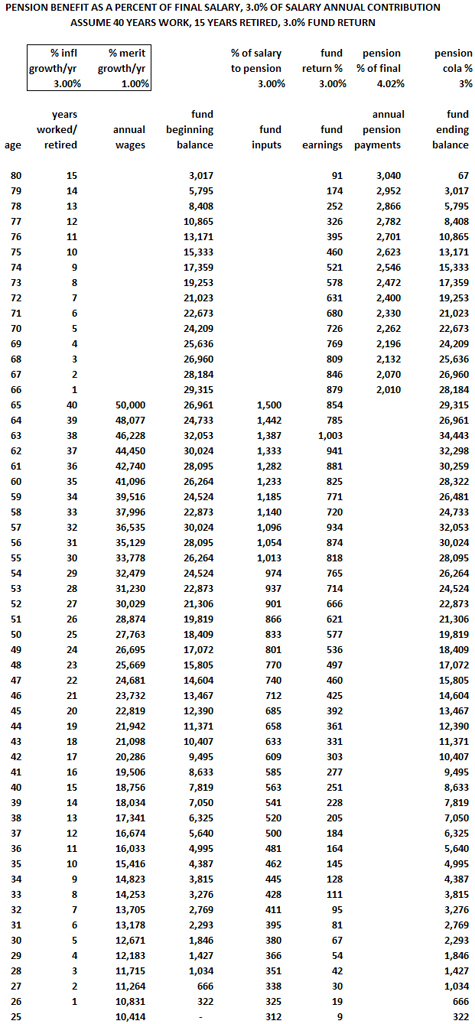Senator DeLeon’s Universal Retirement Security Act
The challenge of providing retirement security to all citizens is the broader issue behind the debate over what level of public sector pension benefits are both equitable and financially sustainable. California Senator Kevin De Leon’s proposed legislation, SB 1234, will hopefully further this debate.
As reported in the Sacramento Bee by Jon Ortiz on February 24th “California Democrats push pension plan for nongovernment workers,” and in the Los Angeles Times by Mark Lifsher on February 23rd, “Private-sector retirement savings plan proposed for California,” DeLeon’s bill will require every employer in the state with five or more employees to participate in the plan. If employers already offer a pension plan or 401K plan, they would be exempt.
Plenty of commentators have already weighed in with sobering missives on the many problems with DeLeon’s bill. You can read them in the San Bernardino Press Enterprise, the Pleasanton Weekly, CalWatchdog, CalWhine, and elsewhere. But when DeLeon says his bill “is designed to supplement Social Security retirement benefits,” he is on to something bigger than he may realize.
The goal of taxpayer funded retirement security, whether it is for a retired government worker or a retired private sector worker living on social security, is not to support an affluent lifestyle. A taxpayer funded retirement pension should be a modest amount, better than social security – but not some huge amount that enables an affluent lifestyle. To have an affluent lifestyle in retirement, people should expect to save money and eliminate debt, not just show up at a government job for 20 or 30 years then collect far more than a social security recipient could ever hope to collect. Why not eliminate public sector pensions, and provide everyone social security, supplemented by the plan DeLeon is proposing?
When estimating just how much DeLeon’s pension plan for private sector workers is going to actually be able to pay out, it will highlight a fundamental principle that still seems to be lost on the public sector apologists: Not all of us are libertarians, nor are all of us against improved retirement security for all citizens. But whatever it is that taxpayers are asked to support has to be equally accessible to ALL workers according to the same merit-based and need-based formulas. We can disagree on the formulas. We can disagree on what we believe is financially sustainable. But however our government may enable better retirement security – it should be the SAME DEAL for all taxpayers. The disgrace is that public sector unions have used their political muscle to offer deals to their members in the government workforce that could never, ever be financially feasible to all workers.
As DeLeon’s bill is debated, hopefully it will not only highlight the truly grotesque disparity between government worker pensions and social security for the rest of us, but it will shed light on the biggest single variable affecting the affordability of public sector pensions: The long-term annual rate of return for the pension fund.
As quoted in the Los Angeles Times, DeLeon said “The board would be required to invest only in conservative instruments, such as U.S. government Treasury bonds.”
Does Senator DeLeon understand what sort of can of worms he is opening here? A ten-year U.S. treasury bond pays around 3.0% per year. Yet CalPERS still claims they can earn 7.75% per year. How much money will this “supplemental pension,” expressed as a percent of final salary, deliver to someone who contributes 3% of their salary for 40 years, invested at 3% per year?
As the chart following this post proves, taking 3.0% from a paycheck – assuming normal inflation and minimal merit increases (which increases ultimate fund earnings by concentrating more investment in the early career years) – will buy a person who retires after 40 years of full time work at a final annual salary of $50,000 with a whopping $2,010 pension per year; that’s an extra $168 per month. Anyone who dismisses this decidedly math-centric, wonkish claim as “right-wing spin” is invited to verify these calculations for themselves.
What Senator DeLeon is going to learn, along with many other worthy liberals in the State Legislature who are grappling with the pension crisis, is the extreme sensitivity of pension fund solvency to the achievable rates of return for these funds. And if Senator DeLeon wants to impose a “risk free” rate of return on a pension fund for private workers, he may wish to impose the same restrictions on public sector pension funds. Or stop having taxpayers make up the difference when those more aggressive investments fail to meet expectations.
There is nothing wrong with our legislators trying to address the issue of retirement security. But while doing so, they might question why we are now on track to pay more money each year, in absolute dollars, to our retired public sector workers in the form of pensions, than we will pay in social security to the other 80% of our workforce when they retire. They might also question why they have gone into partnership with the very Wall Street wizards they rhetorically condemn, by allowing them to promise absurdly high rates of pension fund returns to public sector employee negotiators, then together turn on taxpayers to cover the inevitable shortfall (for more, read “Merge Social Security & Public Pensions“).
* * *

Edward Ring is a contributing editor and senior fellow with the California Policy Center, which he co-founded in 2013 and served as its first president. He is also a senior fellow with the Center for American Greatness, and a regular contributor to the California Globe. His work has appeared in the Los Angeles Times, the Wall Street Journal, the Economist, Forbes, and other media outlets.
To help support more content and policy analysis like this, please click here.


Leave a Reply
Want to join the discussion?Feel free to contribute!